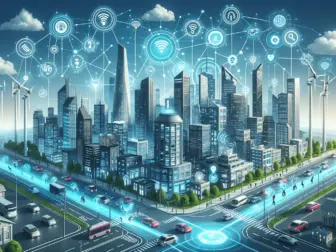Tag - Connected Vehicles
Revolutionizing Transportation: The Power of Connected Vehicles
Connected vehicles are transforming the way we think about transportation. By utilizing advanced technologies such as Internet of Things (IoT) sensors, artificial intelligence, and data analytics, these vehicles are able to communicate with each other and with the surrounding infrastructure in real-time. This connectivity enables a wide range of benefits, from improving road safety and reducing traffic congestion to enhancing driver convenience and reducing emissions.
One of the key advantages of connected vehicles is their ability to communicate with each other to share important information such as traffic conditions, road hazards, and weather updates. This real-time data exchange allows drivers to make more informed decisions, leading to smoother traffic flow and reduced accidents. For example, if one vehicle detects a sudden slowdown ahead, it can alert other vehicles in the vicinity to slow down or change lanes, helping to prevent rear-end collisions and traffic jams.
Connected vehicles also have the potential to revolutionize the way we navigate and park in urban areas. Through integrated GPS systems and smart city infrastructure, these vehicles can receive updated route recommendations based on real-time traffic data and parking availability. This not only saves drivers time and frustration but also reduces fuel consumption and emissions by minimizing idling and circling for parking spots.
Furthermore, connected vehicles open up new opportunities for autonomous driving technologies. By leveraging data from connected infrastructure and other vehicles, autonomous vehicles can make more accurate decisions in complex traffic situations. This paves the way for safer and more efficient transportation systems, where human error is minimized, and road capacity is maximized.
While the benefits of connected vehicles are clear, there are also challenges that need to be addressed. Privacy and cybersecurity concerns are top of mind for many consumers, as the amount of data collected and shared by connected vehicles continues to grow. Manufacturers and policymakers must work together to establish robust data protection measures and secure communication protocols to ensure the trust and safety of connected vehicle systems.
In conclusion, connected vehicles have the potential to revolutionize transportation as we know it. By enabling vehicles to communicate with each other and with the surrounding infrastructure, we can create smarter, safer, and more efficient transportation systems. As technology continues to advance, the possibilities for connected vehicles are endless, and the future of transportation looks brighter than ever.
